What Airlines Fly Airbus A380? The Airbus A380, a marvel of aviation engineering, remains in service with several prominent airlines, offering passengers a unique and luxurious flying experience. At flyermedia.net, we provide up-to-date information on aviation news, flight training, and airline operations. If you’re an aviation enthusiast, pilot, or frequent flyer, explore our site for more on aviation careers, air travel tips, and the latest in aviation technology.
Table of Contents
- Which Airlines Still Operate the Airbus A380?
- The Airbus A380: A Brief Overview
- Airlines Currently Flying the A380
3.1. Emirates
3.2. Singapore Airlines
3.3. Qatar Airways
3.4. British Airways
3.5. China Southern Airlines
3.6. Korean Air
3.7. Asiana Airlines
3.8. Qantas
3.9. Etihad Airways
3.10. Malaysia Airlines
3.11. Thai Airways
3.12. All Nippon Airways (ANA) - Airlines That Retired the A380
4.1. Lufthansa
4.2. Air France
4.3. Hi Fly - Why the A380 Remains Popular with Certain Airlines
- The Future of the Airbus A380
- Airbus A380: Facts and Figures
- Where Can You Fly on an A380? Popular Routes
- The A380 Experience: What Makes It Special?
- Environmental Impact of the A380
- The A380 and the Pilot Community
- Maintaining the A380: A Technical Perspective
- The A380 in Pop Culture
- Frequently Asked Questions (FAQs) About the Airbus A380
- Conclusion
1. Which Airlines Still Operate the Airbus A380?
Yes, several airlines continue to operate the Airbus A380, offering passengers a luxurious and spacious travel experience. The A380, often dubbed the “Superjumbo,” is renowned for its size and comfort. But, with shifting airline strategies and the impact of global events, the list of active operators has evolved. Let’s delve into which airlines are still committed to flying this iconic aircraft.
2. The Airbus A380: A Brief Overview
The Airbus A380 is the world’s largest passenger airliner, developed by Airbus. This double-deck, wide-body aircraft can typically accommodate around 500-800 passengers, depending on the airline’s configuration. First flown in 2005 and entering commercial service in 2007, it quickly became a symbol of luxury and long-haul travel. According to Airbus, the A380 was designed to alleviate congestion at busy airports by carrying more passengers per flight.
3. Airlines Currently Flying the A380
Several airlines have integrated the A380 into their fleet. Here’s a detailed look at each airline:
3.1. Emirates
Emirates is the largest operator of the Airbus A380, with a substantial fleet. As of 2023, Emirates operates a significant number of A380s, using them extensively on long-haul routes.
Emirates utilizes the A380 on routes to various destinations, including:
- London
- Paris
- New York
- Sydney
According to Emirates, the A380 offers passengers enhanced comfort with spacious seating and luxurious amenities.
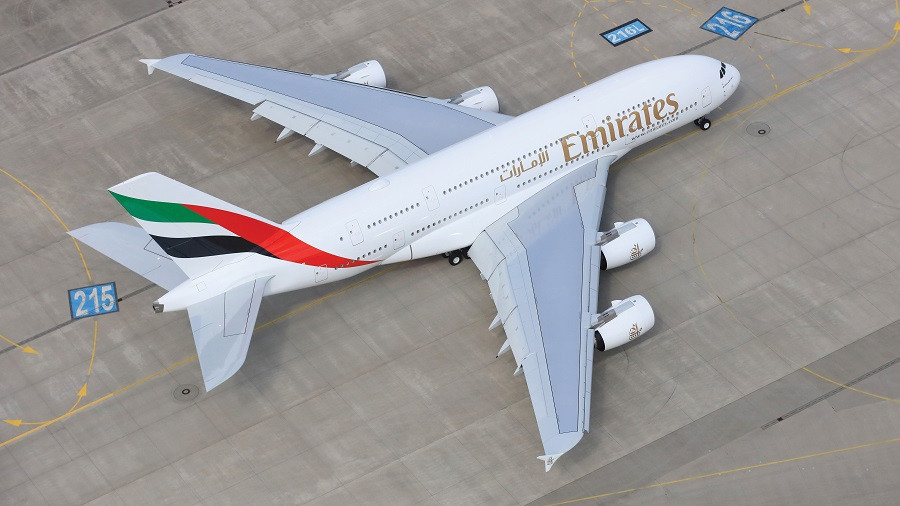 Emirates Airbus A380
Emirates Airbus A380
Emirates A380 showcases the airline’s commitment to providing luxurious and comfortable air travel.
3.2. Singapore Airlines
Singapore Airlines is known for its premium service and modern fleet, including the A380.
Singapore Airlines deploys the A380 on routes such as:
- Singapore to London
- Singapore to Sydney
- Singapore to Zurich
According to Singapore Airlines, the A380 features private suites and enhanced business class seating, offering passengers a high level of comfort.
 Singapore Airlines Airbus A380
Singapore Airlines Airbus A380
Singapore Airlines A380 epitomizes luxury and innovation in air travel.
3.3. Qatar Airways
Qatar Airways reintroduced the A380 into its fleet due to ongoing issues with its Airbus A350 aircraft.
Qatar Airways operates the A380 on routes like:
- Doha to London
- Doha to Paris
Qatar Airways highlights that the A380 provides additional capacity and helps maintain its service standards during fleet adjustments.
 Qatar Airways Airbus A380
Qatar Airways Airbus A380
Qatar Airways A380 offers a comfortable and spacious option for long-haul flights.
3.4. British Airways
British Airways utilizes the A380 on several long-haul routes, providing increased capacity and passenger comfort.
British Airways operates the A380 on routes such as:
- London to Los Angeles
- London to Miami
- London to Dubai
According to British Airways, the A380 allows the airline to offer more seats on popular routes, enhancing the travel experience for passengers.
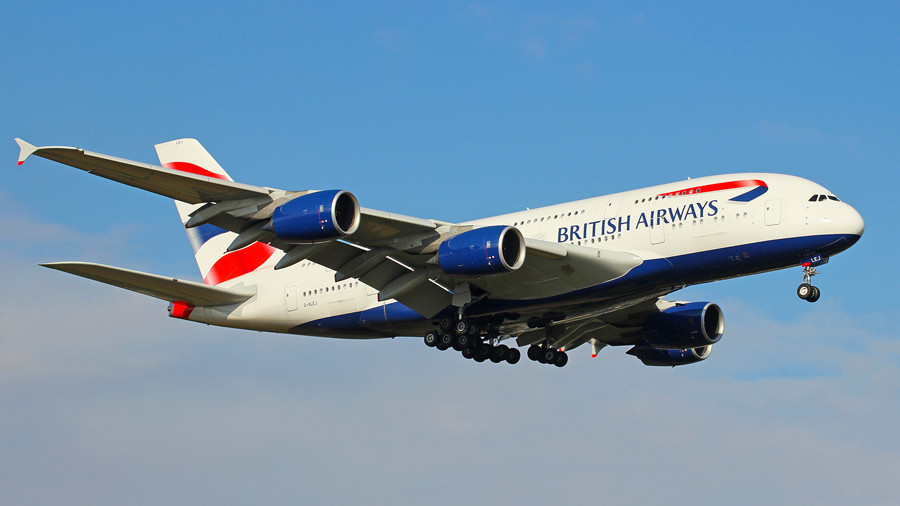 British Airways Airbus A380
British Airways Airbus A380
British Airways A380 provides a reliable and comfortable option for transatlantic and long-distance travel.
3.5. China Southern Airlines
China Southern Airlines is the sole Chinese carrier operating the A380, primarily on international routes.
China Southern Airlines uses the A380 on routes connecting:
- Guangzhou to Amsterdam
- Guangzhou to Los Angeles
China Southern Airlines emphasizes that the A380 helps meet the high demand on these routes, providing a comfortable travel option for passengers.
3.6. Korean Air
Korean Air has a smaller A380 fleet and operates it on select routes to maintain pilot proficiency and crew readiness.
Korean Air operates the A380 on routes such as:
- Seoul to Guangzhou (limited schedule)
Korean Air notes that the A380 helps in crew training and maintaining operational readiness for larger aircraft.
3.7. Asiana Airlines
Asiana Airlines may eventually integrate its A380 fleet into Korean Air’s operations, pending the finalization of their merger.
Asiana Airlines currently keeps its A380 aircraft inactive.
Asiana Airlines states that the future of its A380 fleet will be determined by the integration plans with Korean Air.
3.8. Qantas
Qantas has brought its A380 aircraft back into service, deploying them on key long-haul routes.
Qantas operates the A380 on routes such as:
- Sydney to Los Angeles
Qantas highlights that the A380 provides increased capacity and enhances the passenger experience on these important routes.
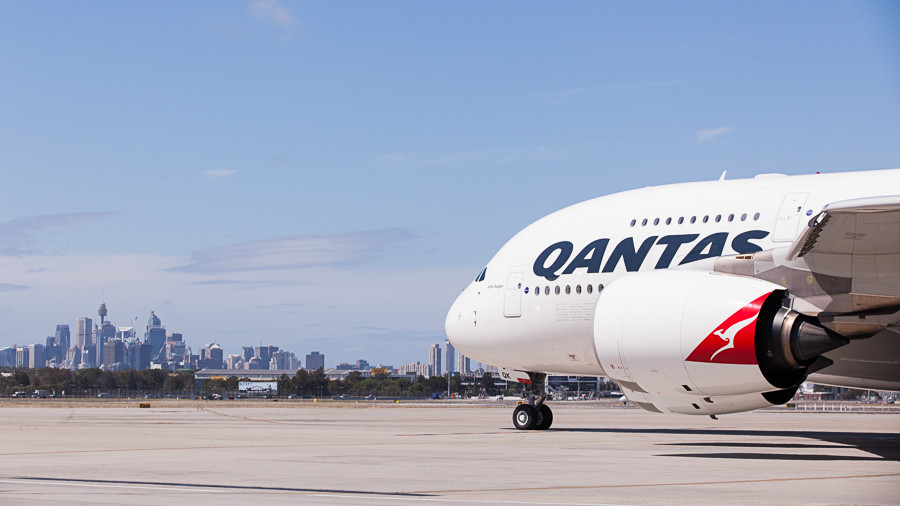 Qantas Airbus A380
Qantas Airbus A380
Qantas A380 offers a comfortable and reliable option for passengers traveling between Australia and the United States.
3.9. Etihad Airways
Etihad Airways is focusing on fleet simplification and using smaller, more efficient aircraft, but may reconsider the A380 if passenger numbers increase.
Etihad Airways currently keeps its A380 aircraft inactive.
Etihad Airways indicates that the A380 could be reintroduced if demand warrants it, especially given the luxurious amenities it offered.
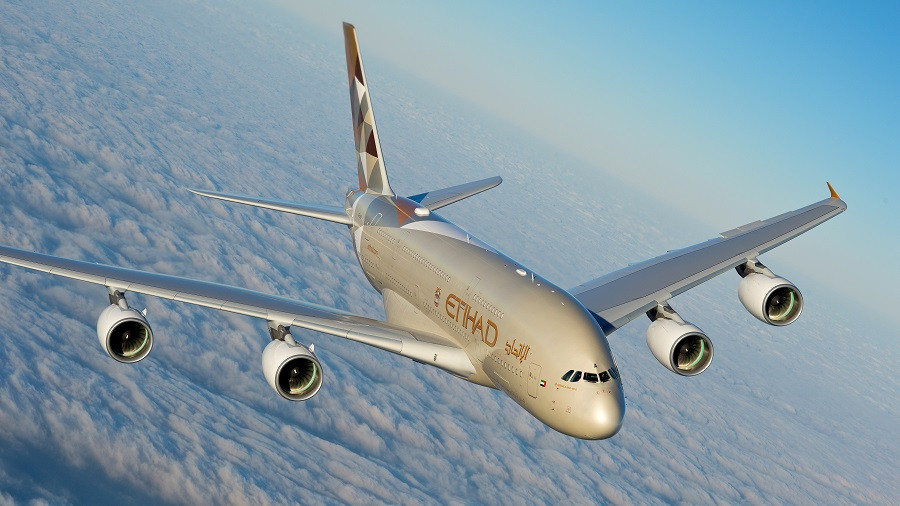 Etihad Airways Airbus A380
Etihad Airways Airbus A380
Etihad Airways A380 represents a period of luxurious and high-end air travel.
3.10. Malaysia Airlines
Malaysia Airlines has been looking to phase out its A380 fleet due to financial challenges and the reduced demand for very large aircraft.
Malaysia Airlines currently keeps its A380 aircraft inactive.
Malaysia Airlines explains that the decision to retire the A380 is part of a broader restructuring effort to improve financial stability.
 Malaysia Airlines Airbus A380
Malaysia Airlines Airbus A380
Malaysia Airlines A380 reflects the airline’s effort to streamline operations and reduce costs.
3.11. Thai Airways
Thai Airways, facing financial difficulties, has also moved towards smaller, more efficient aircraft and plans to sell its A380s.
Thai Airways currently keeps its A380 aircraft inactive.
Thai Airways states that the sale of its A380s is part of a fleet restructuring aimed at improving financial performance.
3.12. All Nippon Airways (ANA)
ANA operates its A380 aircraft primarily on routes connecting Japan and Hawaii, featuring special liveries.
ANA operates the A380 on routes such as:
- Tokyo to Honolulu
ANA emphasizes that the A380s with their unique turtle-themed liveries enhance the travel experience for passengers flying to Hawaii.
 All Nippon Airways Airbus A380
All Nippon Airways Airbus A380
ANA A380s with turtle-themed liveries offer a unique and memorable travel experience to Hawaii.
4. Airlines That Retired the A380
Several airlines have retired the Airbus A380 from their fleets due to various factors, including economic considerations, fleet restructuring, and the impact of the COVID-19 pandemic.
4.1. Lufthansa
Lufthansa, once a prominent operator of the A380, has retired its fleet as part of a broader restructuring effort.
Lufthansa cited economic reasons and a shift towards more efficient aircraft as the primary drivers for retiring the A380. According to Lufthansa, the decision aligns with its strategy to modernize its fleet and reduce operating costs.
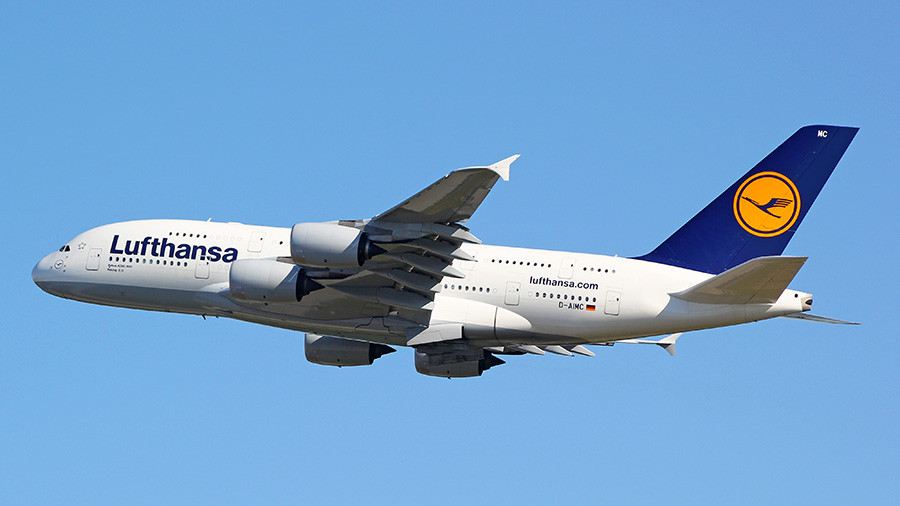 Lufthansa Airbus A380
Lufthansa Airbus A380
Lufthansa A380 symbolizes a period of large-capacity, long-haul air travel.
4.2. Air France
Air France has also retired its A380 fleet, accelerating the process due to the COVID-19 pandemic and focusing on more fuel-efficient aircraft.
Air France indicated that the A380’s high operating costs and the availability of newer, more efficient models led to its retirement. Air France noted that retiring the A380 supports its commitment to reducing emissions and improving fuel efficiency.
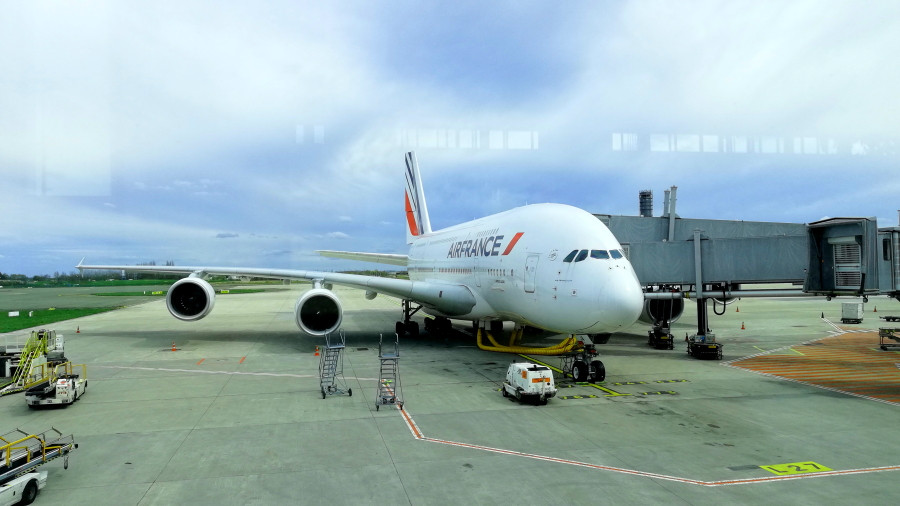 Air France Airbus A380
Air France Airbus A380
Air France A380 represents a chapter in the airline’s history of providing long-haul travel with a focus on efficiency.
4.3. Hi Fly
Hi Fly, a Portuguese charter airline, briefly operated a second-hand A380 before retiring it due to high operating costs and limited demand.
Hi Fly stated that the A380’s operational costs were not sustainable for its business model, which focuses on charter flights and short-term leases. According to Hi Fly, the airline has shifted its focus to smaller, more versatile aircraft that better suit its operational needs.
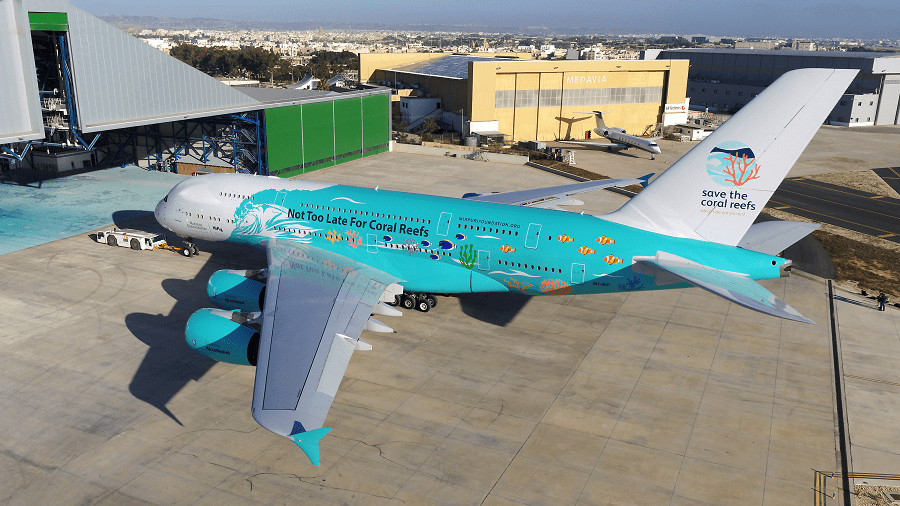 Hi Fly Airbus A380
Hi Fly Airbus A380
Hi Fly A380 highlights the challenges of operating very large aircraft in niche markets.
5. Why the A380 Remains Popular with Certain Airlines
The A380 remains popular with certain airlines due to its capacity and passenger appeal. Emirates, for example, leverages the A380 to maximize passenger numbers on high-demand routes. The A380 offers a unique travel experience with spacious cabins and luxurious amenities, attracting passengers willing to pay a premium. Additionally, for airlines like Qatar Airways, the A380 provides a temporary solution to capacity constraints caused by other fleet issues.
6. The Future of the Airbus A380
The future of the A380 is mixed. While some airlines are retiring the aircraft, others continue to operate and invest in their A380 fleets. Factors influencing its future include:
- Operating Costs: The A380’s high operating costs make it less attractive compared to newer, more fuel-efficient aircraft.
- Passenger Demand: On high-demand routes, the A380’s capacity can be a significant advantage.
- Fleet Strategy: Airlines are increasingly focusing on smaller, more versatile aircraft that can serve a wider range of routes.
According to a report by the International Air Transport Association (IATA), airlines are increasingly prioritizing fuel efficiency and reduced emissions, which may impact the long-term viability of the A380.
7. Airbus A380: Facts and Figures
- Wingspan: 79.8 meters (261 ft 10 in)
- Length: 72.7 meters (238 ft 6 in)
- Height: 24.1 meters (79 ft 1 in)
- Passenger Capacity: Typically 500-800 passengers
- Maximum Range: 14,800 km (8,000 nmi)
- Maximum Takeoff Weight: 575,000 kg (1,268,000 lb)
These figures highlight the A380’s impressive size and capabilities, making it a unique aircraft in the aviation industry.
8. Where Can You Fly on an A380? Popular Routes
You can experience the A380 on various long-haul routes operated by airlines such as Emirates, Singapore Airlines, and British Airways. Popular routes include:
- Emirates: Dubai to London, Paris, New York, and Sydney
- Singapore Airlines: Singapore to London, Sydney, and Zurich
- British Airways: London to Los Angeles, Miami, and Dubai
- ANA: Tokyo to Honolulu
These routes offer passengers the opportunity to enjoy the A380’s spacious cabins and luxurious amenities.
9. The A380 Experience: What Makes It Special?
The A380 offers a unique and luxurious travel experience due to its:
- Spacious Cabins: Wider seats and aisles provide more room for passengers.
- Quieter Ride: Advanced noise reduction technology ensures a more peaceful flight.
- Luxurious Amenities: Many airlines offer premium features such as private suites, on-board lounges, and gourmet dining.
Passengers often praise the A380 for its comfort and enhanced travel experience, making it a favorite among frequent flyers.
10. Environmental Impact of the A380
The A380’s environmental impact is a topic of debate. While it carries more passengers per flight, reducing the number of flights needed, its fuel consumption per seat can be higher compared to newer, more efficient aircraft.
Key considerations include:
- Fuel Efficiency: Newer aircraft designs and technologies offer better fuel efficiency.
- Emissions: The A380’s emissions per flight are significant due to its size and fuel consumption.
- Capacity Utilization: The environmental impact is also influenced by how full the aircraft is on each flight.
A study by the European Aviation Safety Agency (EASA) indicates that optimizing flight routes and improving air traffic management can help reduce the environmental impact of large aircraft like the A380.
11. The A380 and the Pilot Community
Piloting the A380 is considered a prestigious achievement within the pilot community. The aircraft’s advanced systems and unique handling characteristics require specialized training and expertise.
Key aspects include:
- Training: Pilots undergo extensive training to operate the A380 safely and efficiently.
- Advanced Systems: The A380 features advanced avionics and flight control systems.
- Prestige: Flying the world’s largest passenger airliner is a career highlight for many pilots.
According to Boeing’s 2023 Pilot and Technician Outlook, the demand for skilled pilots remains high, particularly for those trained to operate advanced aircraft like the A380.
12. Maintaining the A380: A Technical Perspective
Maintaining the A380 is a complex and demanding task, requiring specialized knowledge and equipment. The aircraft’s size and complexity necessitate rigorous maintenance schedules and procedures.
Key maintenance aspects include:
- Regular Inspections: Detailed inspections are conducted to identify and address potential issues.
- Component Overhaul: Components are regularly overhauled to ensure optimal performance and safety.
- Specialized Training: Maintenance personnel require specialized training to work on the A380.
Airbus provides extensive support and training to airlines operating the A380, ensuring that maintenance is performed to the highest standards.
13. The A380 in Pop Culture
The A380 has made its mark in popular culture, appearing in movies, television shows, and advertising campaigns. Its iconic status as the world’s largest passenger airliner has captured the public’s imagination.
Examples include:
- Movies: The A380 has been featured in aviation-themed films, showcasing its size and luxury.
- Advertising: Airlines have used the A380 in their marketing campaigns to promote their premium services.
- Documentaries: Documentaries have explored the engineering and operational aspects of the A380.
The A380’s presence in pop culture reflects its significance in the world of aviation and its appeal to a broad audience.
14. Frequently Asked Questions (FAQs) About the Airbus A380
Q1: Which airlines currently operate the Airbus A380?
A1: Currently, airlines such as Emirates, Singapore Airlines, Qatar Airways, British Airways, China Southern Airlines, Korean Air, Asiana Airlines, Qantas, Etihad Airways, Malaysia Airlines, Thai Airways, and All Nippon Airways (ANA) operate the Airbus A380.
Q2: Why are some airlines retiring the A380?
A2: Some airlines are retiring the A380 due to high operating costs, the availability of more fuel-efficient aircraft, and shifts in fleet strategy towards smaller, more versatile models.
Q3: What makes the A380 unique?
A3: The A380 is unique due to its large passenger capacity, spacious cabins, and luxurious amenities, offering a comfortable and enhanced travel experience.
Q4: How many passengers can the A380 carry?
A4: The A380 can typically carry between 500 and 800 passengers, depending on the airline’s configuration.
Q5: What are some popular routes where I can fly on the A380?
A5: Popular routes include Dubai to London, Singapore to Sydney, London to Los Angeles, and Tokyo to Honolulu.
Q6: Is the A380 environmentally friendly?
A6: The A380’s environmental impact is debated. While it carries more passengers per flight, its fuel consumption per seat can be higher compared to newer aircraft.
Q7: What is it like to fly on the A380?
A7: Flying on the A380 offers a luxurious and comfortable experience, with spacious seating, a quieter ride, and premium amenities.
Q8: What are the key dimensions of the A380?
A8: The A380 has a wingspan of 79.8 meters, a length of 72.7 meters, and a height of 24.1 meters.
Q9: What is the maximum range of the A380?
A9: The maximum range of the A380 is 14,800 km (8,000 nmi).
Q10: How does the pilot community view the A380?
A10: Piloting the A380 is considered a prestigious achievement, requiring specialized training and expertise due to the aircraft’s advanced systems and unique handling characteristics.
15. Conclusion
The Airbus A380 remains an iconic aircraft in the aviation industry, offering a unique and luxurious travel experience. While some airlines have retired the A380, others continue to operate it on key routes, leveraging its capacity and passenger appeal. Whether you’re a pilot, aviation enthusiast, or frequent flyer, understanding the A380’s role in the industry provides valuable insight into the dynamics of air travel.
For more information on airlines, flight training, and aviation news, visit flyermedia.net. Discover resources such as pilot training programs, aviation industry insights, and tips for air travel. Join our community of aviation professionals and enthusiasts!
If you’re passionate about aviation and seeking the latest insights and opportunities, explore flyermedia.net today and take your passion to new heights. Address: 600 S Clyde Morris Blvd, Daytona Beach, FL 32114, United States. Phone: +1 (386) 226-6000. Website: flyermedia.net.